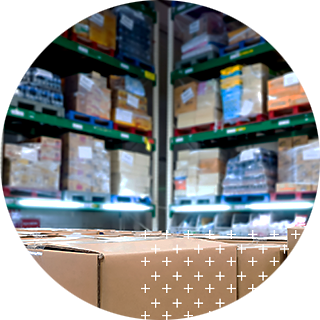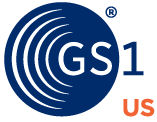Whether you are selling direct to consumer or selling through retailers, product packaging is an important part of the shopping experience. In fact, according to research by Ipsos, 72% of Americans believe that product packaging design plays a crucial role in their purchasing decisions.
Consumers respond differently to colors that stand out, unique shapes, and interesting textures of packaging and may even pay more for a product if the package design really catches their eye. How the product is presented matters. Especially for start-up companies, your packaging design is often critical to how you establish yourself as a small business and help consumers form emotional connections with your product.
GS1 US ensures that your product can be seen and sold everywhere with trusted UPC barcodes. Using a proper barcode combined with outstanding small business packaging ensures that your product is accepted by retailers and marketplaces.
Learn more about proper barcode placement on packaging.

Getting a barcode directly from GS1 US also decreases the chance that you’ll have to reprint your packaging if your barcode’s authenticity is ever called into question by a retail partner.
“My barcode goes onto every single box that I make. There’s no way I can go back and redo this. I just knew I had to get it right,” said Lisa Lane, founder of Rinseroo, an at-home shower cleaning and dog washing product. “There should also never be a question that this product is linked to my brand. I would be risking that if I didn’t use authentic barcodes.”
Chose the right colors for your package design (It’s Psychology)
Many of our purchase decisions start with a reaction to colors that stimulate our minds. What makes a product stand out is really a lesson in the psychology of colors in marketing. Research from the Institute for Color Research revealed that people make subconscious judgments about a product within 90 seconds of viewing it and that between 62-90% of that assessment is based on color alone.
While the invention of the smartphone may have changed the way we discover products, there are still many opportunities for consumers to evaluate a product side by side, whether it is on a digital shelf or on a physical shelf. Marketers call this moment ZMOT, which stands for Zero Moment of Truth. It’s just before you decide to purchase a product when you receive a stimulus of some kind (a video, an ad, etc.) that tells your brain to consider buying it. You may have a quick reaction to the colors in advertising or the colors in marketing according to your past experiences, preferences, or some other factor before you even think about price.
Color psychology in marketing is directly related to brand color psychology. Packaging is a prime opportunity to extend your brand identity and it is a representation of the tone of your brand. Depending on your industry, you can communicate how playful or serious your product is, who you want to reach, and what you want the customer to feel all in relationship to the package’s colors.

Stick with simple color palettes
In general, marketers suggest that you don’t use too many colors and to keep your color palette simple. Stay true to your brand while standing out among the competition. Brand colors help you maintain loyalty and recognizability. Using colors that stand out can pay off if your tailor color choices to suit your audience. Do your research first to understand what color makes people want to buy.
Colors that catch the eye can vary by industry, too. For example, companies that make outdoor sporting goods use earthy colors to remind the shopper of fun experiences camping or hiking. A popular approach is to choose two dominant colors and complement the design with hues and tints of those same shades.
Blue
Blue has broad appeal and communicates dependability and serenity. Darker shades can help you connect with older generations, where younger audiences prefer vibrant shades.
White
White packaging can communicate a clean, simplistic feel and conveys an elegance attributed to the brand. Using white allows you to mix in a wide variety of accent colors.
Yellow
Yellow signifies fun! If you want to communicate that your brand and product have energy and vibrancy, say it with yellow tones.
Red
Going after the impulsive shopper? Try red packaging—the sight of it literally gets people’s hearts racing. It’s the color of passion and strength.
Black
Also popular among impulse shoppers, black packaging means authority, maybe a sense of luxury at times. Like white, it offers a variety of complementary color options.
Understanding your brand’s audience
Your packaging should communicate what makes you special, but none of that will matter if you don’t consider your audience. We know that colors evoke feelings and even a sense of status. But did you also know that different cultures and regions view packaging colors differently? Red, for example, is considered both lucky and unlucky, depending on your part of the world. Some colors are viewed as gender neutral while others can be seen psychologically as gender specific. Even people living in hot or cold climates have varying opinions on colors in marketing. Product packaging reflects a major responsibility to accurately convey who you are through visuals and through your words.

Product placement
Choosing the correct color for your audience can make or break sales. In fact, 52% of shoppers won’t even return to a store if they don’t like the aesthetics, according to a Fohlio. You must put yourself in your customer’s shoes and use colors that play on their emotions in the very moment of product interaction.
When choosing packaging color, also consider the appearance of your barcode. Today, many brands will create fun shapes using their barcodes. But keep in mind, GS1 barcodes require dark colors for bars (e.g., black, dark blue, or dark green) and there should always be a light background surrounding the bars to make it easier for scanners to read.
Your packaging should communicate what makes you special, but none of that will matter if you don’t consider your audience. We know that colors evoke feelings and even a sense of status. But did you also know that different cultures and regions view packaging colors differently? Red, for example, is considered both lucky and unlucky, depending on your part of the world. Some colors are viewed as gender neutral while others can be seen psychologically as gender specific. Even people living in hot or cold climates have varying opinions on colors in marketing. Product packaging reflects a major responsibility to accurately convey who you are through visuals and through your words.
Packaging shape and size
It’s not just about color—the shape and size of packaging for products affects sales, too. Case in point—consumers are increasingly interested in canned or boxed water as a change of pace from bottled water. Unique product packaging can also lead to a loyal community of users. A study by Dotcom Distribution found that 40% of consumers will post photos products with unique packaging on social media.
When doing research to get small business packaging ideas, don’t just consider the look of the packaging for products, but the cost as well. Custom printed packaging can create a wow factor, but the reality is that affordable packaging for small business comes down to efficiency. Your costs tend to be lower with more compact packaging, and consumers might also be impressed with a notable effort to decrease waste.
Use Sustainable Packaging
Sustainable packaging (or eco-friendly packaging) is simply better for the environment. For manufacturers to claim that they are designing sustainable packaging, they often conduct full life cycle assessments to determine a product’s environmental impact.
Sustainable package design has risen over the years to become a key concern among consumers. A McKinsey study found that 55 percent of shoppers are extremely or very concerned about the environmental impact of product packaging. It’s not just products found in-store—another study from Dotcom Distribution showed that most online shoppers were more likely to purchase from brands that use sustainable packaging materials (62%).
“We are in the midst of a major shift where consumers are demanding more sustainable packaging options,” said Diana Ingles, CEO & Eco-Designer of apparel brand Wild Routed and the sustainable packaging design firm Rootlebox. “Small brands should know this is not just for major companies. They can seek out sustainable packaging options right around the time they are working with GS1 US for their product’s barcode. It’s a key part of connecting to consumer values.”

Use Clear Consistent Messaging
Colors, shapes, sizes, and materials are all very important to package design—don’t forget about the words you use to communicate to your customer.
”As your silent sales warrior, your packaging must connect before it converts," said Victoria Ho, product packaging expert and president of SherpaCPG. "Packaging is a platform where verbal and visual cues can work holistically to generate intrigue, trigger nostalgia, deliver solutions, or establish authority. Invest in clear, confident storytelling to win your audience."
Think carefully about your brand logo placement. Can it be clearly seen at first glance? Packaging design should communicate not just your brand but your mission and values as well. What you stand for matters to consumers. About 72% of shoppers find transparency to be important or extremely important, according to NielsenIQ. Consumers increasingly want to buy from brands that are transparent about purpose and their supply chain.
Font Design Matters
It might seem like a small detail but choosing the right font for your product packaging makes a big difference in sales. The size and structure of the letters and how they relate to other graphic elements, can boost your brand personality, and say a lot about who you are. Much like brand color psychology, different fonts bring out different emotions. The outdoor sports gear brand may opt for a rustic font that goes well with its earthy color tones, while a brand of women’s face lotion may use a playful cursive font.
Use a Trusted GS1 Barcode on Your Package
Product packaging can be as creative as you want, but your barcodes need to follow certain guidelines to be acceptable by retailers and marketplaces. By working with GS1 US to get your barcodes, you’ll know for sure that your UPC barcodes are unique, registered only to your company, and can be shared across trading partners.
What is the purpose of barcodes on packaging? Simply put, barcodes help your product go “beep” in the checkout line at a store. They also help online marketplaces verify that your product is authentic. Getting a GS1 barcode means your product will be acceptable by many different kinds of supply chain and retail systems. This is useful for global fulfillment and inventory management purposes. When used in an online product listing, it can help you turn up in more search results.
An authentic barcode from GS1 US can boost your credibility in the eyes of retailers. Buying UPCs from another source may mean you are using identification numbers previously assigned to someone else. This can cause delays when going to market and may mean additional costs associated with relabeling.
A trusted source for UPC barcodes for more than 50 years, GS1 US is a not-for-profit organization that maintains a host of other open data standards that support the supply chain. Without standards, there would be no consistency in how products are identified, tracked, and sold around the world. GS1 US helps develop best practices and guidelines to create more efficient supply chains.

